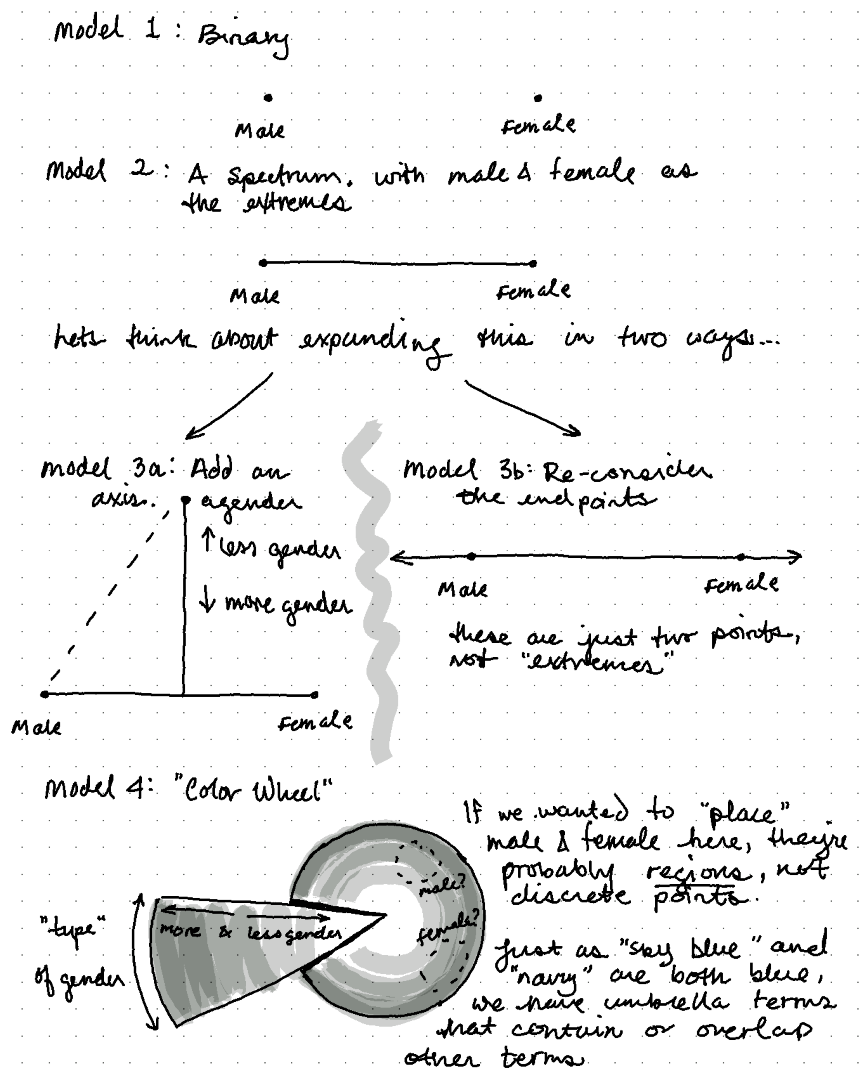gender?
posted on by Lee Cattarin

transcription
Headers and text in blockquotes are handwritten; plain text is image description.
Model 1: Binary
There are two dots spaced a bit apart, labeled ‘Male’ and ‘Female’
Model 2: A spectrum, with male and female as the extremes
The same two dots from the previous diagram, now with a horizontal line connecting them.
Let’s think about expanding this in two ways…
Following this, two arrows point downward to two columns titled Models 3a and 3b, separated by a squiggle.
Model 3a: Add an axis
The connected dots from Model 2. Now, a vertical axis rises midway between male and female, and its extreme is labeled ‘agender.’ Arrows helpfully indicate the directions of ‘less gender’ and ‘more gender.’ There is a dotted line between agender and male, suggesting a triangle shape.
Model 3b: Re-consider the endpoints
The connected dots from Model 2, but instead of the horizontal line ending at the points marked male and female, it continues off into seeming infinity.
These are just two points, not “extremes”
Model 4: “Color Wheel”
A grayscale circle simulating a color wheel, with a slice scaled up to examine. “Type” of gender is labeled as varying as the color wheel is circled, while “amount” of gendered is labeled as varying between the center and the edge of the circle.
If we wanted to “place” male and female here, they’re probably regions, not discrete points.
Just as “sky blue” and “navy” are both blue, we have umbrella terms that contain or overlap other terms”
In correspondence with this text, the color wheel image has two areas circled in dotted lines, labeled ‘male?’ and ‘female?’